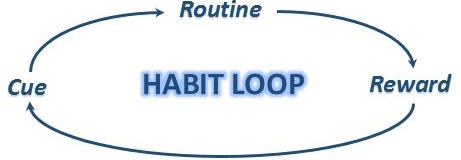Many successful people keep journals. Also, some famous figures in history, like Napoleon or Marcus Aurelius kept journals. This practice has some obvious benefits – it clears up your mind, releases stress, and brings you clarity and inner peace.
There are many varieties of journaling, like keeping a diary; journaling with the Stream of Consciousness technique; keeping a journal from others’ perspective; dream journaling; art journaling; and many, many others. For all of these methods, you can easily find instructions on the Internet. However, in this article, I will focus on a new type of this practice: the Vantage Point Journaling, part of the Reintegration System methodology. Vantage Point Journaling We could say that this is a unique journaling technique. It is different from all other methods in that it initiates writing from four distinctive points of view:
You can adapt your Vantage Point (VP) Journaling practice to your own needs and circumstances. For example, you can keep your diary in a VP Journal form, or practice the Stream of Consciousness technique in a VP Journal framework. Of course, you can apply any other well-known journaling method and do it from several points of view of VP Journaling practice. Vantage Point Journaling is different from all other methods in that it initiates writing from four distinctive points of view.
VP Diary Journaling
This method of journaling is especially good for those of you who need to improve mental clarity, de-clutter the mind, and improve focus. All of us know very well what a diary is. What’s important for this practice is that diary captures streams of thought in an organized and structured way. It requires investing a certain amount of energy and focus on writing. In this framework we will write our diary from several vantage points – the Temporary I,[1] the Heart, another person’s perspective, and Pure Consciousness. The VP Diary Journaling structure is the following: Stage 1: Writing from the Temporary I To begin with your journaling session, do not try to change your mindset or relax too much. Just stay in your current state of mind, whatever it is. Maybe you are anxious, worried, angry, or experiencing any other emotion. You have to write exactly from that state. In this stage, your vantage point is your Temporary I, your transitory I-feeling at that very moment. Just become aware of your Temporary I, its location within your body, and – write. Think about your day, event, or person that you want to write about. The text should be relatively structured, with meaningful sentences. You may be putting on the paper the most important impressions of that particular day, event, or person. Your diary may also relate to thoughts, emotions, new ideas, etc. Let it flow from you. If you are writing in the evening, you can structure your journal by creating a list of questions that you will answer:
Give three to five meaningful answers to each of these questions. When you finish your text, review it. Feel and fully accept main ideas or parts of your text, one by one. You must accept all the main thoughts in the text. By doing that you will effectively remove a great deal of that day’s burden. On the other hand, if you are journaling in the morning, you can create a list of questions related to your goals or action steps for that day, like these:
If you are working with goals, at the end of your text write down the most important goals you are currently working toward. If you want, you can limit the time of writing in this stage, but it should last no less than five minutes. But don’t worry – if you are too tired, it won’t be a problem to reduce your writing to only one or two sentences that comprise your whole day.
Stage 2: Writing from the Heart
The second stage requires you to relax and open your mind. You will probably already find yourself pretty relaxed because the first phase (writing from your Temporary I) has surely de-cluttered your mind to a significant extent.
0 Comments
AuthorNebo D. Lukovich Procrastination is one of the most delusive and stubborn traits. However, there are undoubtedly, many ways to overcome it. Here are some of the most effective ways in general: 1. Meditate Any mindful meditation technique is ideal for curing procrastination quickly. If you prefer to stick with traditional approaches, there are many varieties of Buddhist or Yoga meditation that may be suitable for you. Keep in mind, though, that some of these methods require the practitioner to stick with all the other practices within that particular system. For this purpose, I would recommend a deeply profound mindful meditation, yet one of the simplest ones. First you relax, using one of the many relaxation techniques. Then you just ask yourself: “What will be my next thought?” Then, just wait for the next thought, being curious and alert. This will easily bring you into ‘Pure consciousness’, a state of Presence. Whenever a distraction comes into your mind and disturbs your Presence, you just accept it wholeheartedly and go back to your question which will return you to the Presence. After some practice, you will be able to enter the state of Pure consciousness without using any questions. The goal is simply to stay in this thoughtless state as long as possible. If you want to have stable and lasting results, it is essential to discipline yourself and have at least one, 15-minute meditation session every day. However, I would recommend creating an everyday habit of meditating twice a day, at least 15 minutes in the morning and the same duration in the evening. These sitting sessions should be scheduled to the same periods of the day, if possible. So, why is meditation so beneficial for curing procrastination? Meditation releases huge “amounts” of inner obstacles to any of your life goals, which will erase your procrastination tendency. What’s more important, the steady meditation practice will give you additional love, health, strength, calmness, creativity and smoothness in your life.  2. Practice mindfulness in everyday life Do not limit your practice to these fixed meditation sessions only; expand your consciousness into your everyday life. Be mindful. Be aware. You can be in the same state of Pure consciousness almost all the time during the day. Mindfulness dissolves your inner conflicts softly and almost imperceptibly. In the long run, meditation sittings and mindfulness are really the best cure for your procrastination. And whenever you are in that state of Presence, you will be at perfect harmony with the world; your body will move lightly and flawlessly; your mind will function impeccably whenever needed, and all your actions will be done in the most effective way. 3. Replace bad habits, create good ones If applicable, it’s a good idea to make a habit out of your desired action. While being in the state of Presence, during your mindful periods of the day, try to entice yourself to do your desired action. While doing that, employ the so-called “habit loop”[1]. Every habit has three components: a cue (trigger), routine and reward. A cue is anything that triggers the habitual routine. If the routine brings a concrete reward to the person, it will probably be repeated. In that case, it would continue to repeat and reaffirm itself due to some sort of reward at the end. The reward is usually an inner state of contentment or relief that comes through the routine itself, but can also be an external pleasant event or thing. The trick to changing bad habits is just is to change the routine, and to leave the same cue and reward. But in this case, you have to designate a trigger and a cue that would be appropriate for your action to become a habit. While being in the state of Presence, trigger yourself with the designated cue and do what you have to do. Finally, treat yourself with the same reward. Repeat this procedure as many times as possible, until your desired action becomes an easy and involuntary act to you. [1]Duhigg, Charles. The Power of Habit: Why We Do What We Do, and How to Change. Random House, Kindle Edition, 2012 4. Change your limiting beliefs Beliefs are our little truths about everything. They give a shape to our life. They are usually supported by underlying emotions, so they become very strong mental habits. Beliefs are often manifested as recurring thoughts (normally together with emotions) on a particular subject. Make a list of your negative beliefs. If you are not sure whether you have a particular belief or not, just say it aloud to yourself and try to feel it. If you have an emotional feedback, either pleasant or unpleasant, you definitely have that belief! After creating your own list of negative beliefs, modify it by adding an opposite, positive belief next to each negative one in order to make pairs of opposite beliefs. Once you have done that, you apply the technique called “Dissolving the Temporary I Plus” (DTI+)[1] on each pair of beliefs from the list. Perhaps you will have to pass through it several times, but negative beliefs will be replaced with fitting positive ones in the end of the process. One of the most important beliefs is certainly about procrastination. For example, you have a belief “I always procrastinate.” You replace it with: “I easily do what should be done immediately.” [1] For more information, check out: Dissolving the Temporary I Plus 5. Have enough rest Never underestimate the importance of good rest. As common person needs in average 8 hours of sleep, plus relaxation and meditation time every day, it boils down to 9-10 hours of some sort of resting day time. If you don’t have enough resting time, your work on anything will be less effective and spoiled with sleepiness. Not only that – your hidden and suppressed subconscious structures will surface more easily. That’s not bad per se, but those elements of your personality will usually be surfacing unexpectedly, when you need them the least. 6. Get motivation from books, talks or movies
This will fuel up your energy. Without this, when you get to the low point, when you get stuck with a challenge that seems unsolvable, you will give up. 7. Get support from closest friends Talk with your friends about this problem. Ask them to support you whenever you get stuck in the mud of procrastination. They should react quickly and decisively every time they notice your delay or reluctance. 8. Do Samyama Samyama is an ancient contemplative practice stemming from Hindu tradition. Being a combination of meditation and concentration, Samyama first brings a practitioner to the state of pure consciousness, then, to an inner union with the object of concentration. It can also be very successfully used for the purpose of attaining goals. The Samyama procedure suitable for the goal achievement and overcoming procrastination is essentially the following: Enter the state of Presence, using some of previously mentioned techniques. While dwelling in that pure consciousness, gently bring into your focus a simple idea which symbolizes your goal, your desire. Don’t lose yourself into that thought, you need to keep the awareness of Presence all the while you are focusing on the idea related to your goal. After several seconds of focusing on that idea, turn back to the pure consciousness. Repeat this as many times as possible. That’s it; you’re done! The whole idea of this practice is: whatever mind content (thought, emotion and sensation) is being consciously experienced while residing in Presence, the best aspect of that content will be seeded in one's life. If the content is harmful, it will diminish. If the content is beneficial, it will temporarily disappear in pure consciousness, but that pure consciousness will sow its seed in one’s life in the most beneficial and effective way. 9. Deal with distracting thoughts immediately Each time you intend to take the concrete action, and you are distracted by a negative thought or emotion or even an outside event, you immediately have to erase or transform that thought, emotion or event within your mind. To do that, you might use one the techniques of Reintegration or other psychological procedures. If you are consistent in this, you will surely and pretty quickly erase and overcome all inner obstacles to your concrete action and, ultimately, to your goal. You will also easily overcome your procrastination. 10. Do regular journaling Compared to all other tips for overcoming procrastination, this is something that is not of the highest priority. Nevertheless, it would be very wise to create a habit of journaling. That simply means to write down everything that comes to your mind, preferably once a day. While doing that, you have to be relaxed and totally honest to yourself. This practice will gradually peel off many layers of negative thoughts, emotions and other inner obstacles. You have to be persistent in this work. However, keep in mind that if you force yourself too much in any of these practices, the results will not be as expected. Don’t push too hard – you should be overcoming your inner barriers and harmonizing your parts of personality softly, in the most natural yet efficient way. Good luck with your new life! :-) |
Please note that most of the articles have a "Read More" break, which is sometimes hardly visible.
It is located at the bottom of visible part of the article, on the right side. To continue reading the article, click on that link. This page may contain affiliate links meaning we earn a commission if you use those links.
We only recommend pages we appreciate and trust. Archives
March 2023
Categories
All

|
For guest posts or placing ads on our website, please use the contact form on the 'About/Contact Us' page.








 RSS Feed
RSS Feed

